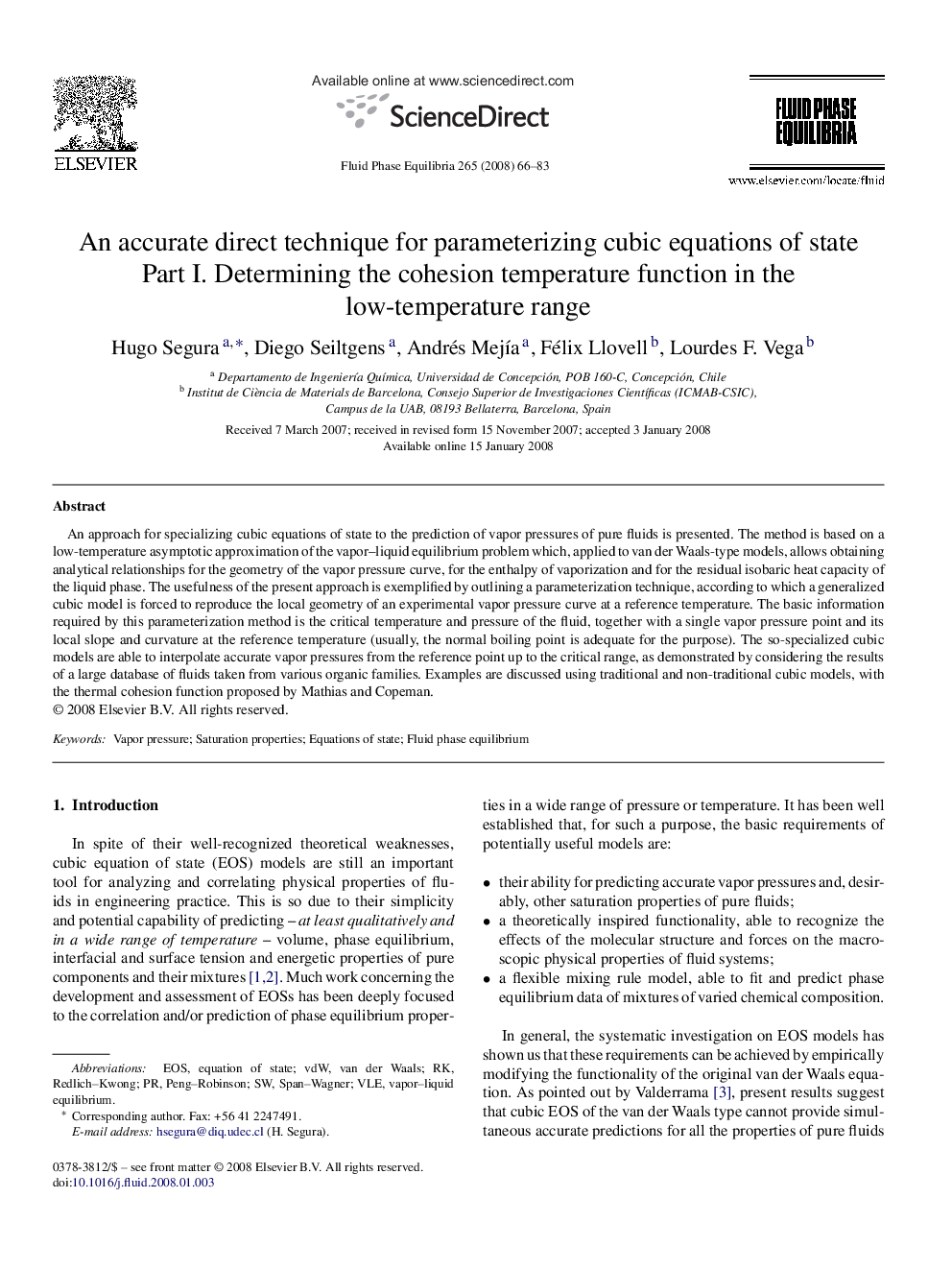| Article ID | Journal | Published Year | Pages | File Type |
|---|---|---|---|---|
| 204085 | Fluid Phase Equilibria | 2008 | 18 Pages |
An approach for specializing cubic equations of state to the prediction of vapor pressures of pure fluids is presented. The method is based on a low-temperature asymptotic approximation of the vapor–liquid equilibrium problem which, applied to van der Waals-type models, allows obtaining analytical relationships for the geometry of the vapor pressure curve, for the enthalpy of vaporization and for the residual isobaric heat capacity of the liquid phase. The usefulness of the present approach is exemplified by outlining a parameterization technique, according to which a generalized cubic model is forced to reproduce the local geometry of an experimental vapor pressure curve at a reference temperature. The basic information required by this parameterization method is the critical temperature and pressure of the fluid, together with a single vapor pressure point and its local slope and curvature at the reference temperature (usually, the normal boiling point is adequate for the purpose). The so-specialized cubic models are able to interpolate accurate vapor pressures from the reference point up to the critical range, as demonstrated by considering the results of a large database of fluids taken from various organic families. Examples are discussed using traditional and non-traditional cubic models, with the thermal cohesion function proposed by Mathias and Copeman.
